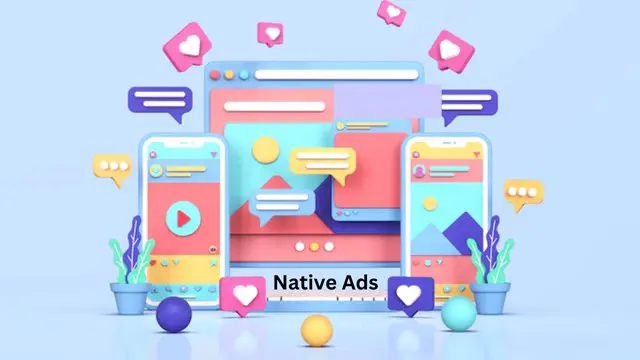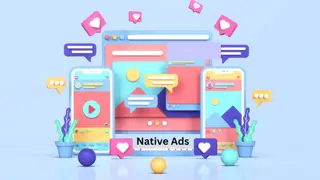
Native Ads with Taboola
Self-paced videos, Lifetime access, Study material, Certification prep, Technical support, Course Completion Certificate
Uplatz
Summary
- Reed Courses Certificate of Completion - Free
- Uplatz Certificate of Completion - Free
Add to basket or enquire
Overview
Uplatz offers this comprehensive course on Native Ads with Taboola. It is a self-paced course with online video lectures. You will be awarded Course Completion Certificate at the end of the course.
Native advertising is a form of paid advertising in which the ads match the look, feel and function of the media format where they appear. They fit “natively” and seamlessly on the web page.
Unlike banner or display ads, native ads don't really look like ads, so they don't disrupt the user's interaction with the page. This is the key to a native advertising definition – native ads expose the reader to promotional content without sticking out like a sore thumb.
Native ads often feature as recommended content on websites, appearing below or beside the article you just read. They also appear as “in feed” ads, as part of your news feed on social networks, such as Facebook or Twitter. Another form that native ads take is search and promoted listings that appear at the top of your Google search results, or in the sidebar.
Different types of Native Ads:
- In-feed Ads - Ads that appear in your news feed on social networks (i.e.. your Facebook or Twitter feed)
- Search & Promoted Listings - Ad listings that appear at the top of your Google search results, or in the side bar
- Content Recommendations - Recommended articles that appear below the article you just read.
Native ads don’t look like ads, so you might think they are hard to spot. Perhaps readers may not even realize they are consuming a paid advertisement, which could compromise the editorial neutrality of the publisher. Fear not, for consumer watchdogs, such as the FTC (Federal Trade Commission) and the IAB (Interactive Advertising Bureau), are at pains to regulate the use of native ads to ensure that consumers are not misled.
Although native ads integrate smoothly into the web page, you can usually see that it’s a native ad by a few telltale signs.
This Native Ads course introduces you to the concepts of native advertising and also to one of the leading native ads platforms called Taboola.
Taboola is a platform that helps promote your brand at the moments your audience is most receptive to new messages, products, and services. For publishers, mobile carriers and other digital properties, Taboola is a powerful engine that provides what's relevant, interesting and new to your audience. The result: new engagement and monetization opportunities. Over a period of years, Taboola has become the largest discovery platform, realizing tremendous growth in users and revenue.
Curriculum
Course media
Description
Native advertising is the concept of creating ads that are so cohesive with the page content, assimilated into the design, and consistent with the platform behavior that the viewer feels the ad belongs there.
Promoted search results and sponsored social media posts are popular examples of native ads. Both formats provide the same kind of value to users as the organic search results and user-generated social media posts.
As consumers become more resistant to traditional forms of advertising, including display ads and banner ads, Fortune 500 brands and consumer startups alike are allocating bigger budgets and more ad spend towards content marketing and non-disruptive ad formats.
The global market for native ads is expected to reach over $402B in annual revenue by 2025.
How do Native Ads work?
Native ads, a tactic that supports performance marketing, work in terms of supply and demand. On the supply side are publishers, with an audience and reach, looking to monetize their sites. On the demand side are advertisers looking to reach an audience and hit goals around awareness, sales, or lead generation.
When a user visits a website with ad space, a publisher’s SSP sends a bid request to a DSP which sends back an advertiser’s bid and metadata metrics. The advertiser with the winning bid has their ad shown to the user.
At the very core of native ads is the concept of placing ads in a relevant and unobstructive context where they natively fit. Native advertising is most likely to look just like all other articles and pieces of content around it, and especially in cases where the goal is brand awareness, you may not see some of the common words you’re accustomed to seeing in advertisements (purchase, subscribe, sign up, etc.).
Who is this course for?
Everyone
Requirements
Passion and enthusiasm to achieve your goals!
Career path
- Digital Marketing Specialist
- Online Advertising Specialist
- Marketing Manager
- Digital Marketing Executive
- Content Marketer
- Chief Marketing Officer (CMO)
Questions and answers
Currently there are no Q&As for this course. Be the first to ask a question.
Certificates
Reed Courses Certificate of Completion
Digital certificate - Included
Will be downloadable when all lectures have been completed.
Uplatz Certificate of Completion
Digital certificate - Included
Course Completion Certificate by Uplatz
Reviews
Currently there are no reviews for this course. Be the first to leave a review.
Legal information
This course is advertised on reed.co.uk by the Course Provider, whose terms and conditions apply. Purchases are made directly from the Course Provider, and as such, content and materials are supplied by the Course Provider directly. Reed is acting as agent and not reseller in relation to this course. Reed's only responsibility is to facilitate your payment for the course. It is your responsibility to review and agree to the Course Provider's terms and conditions and satisfy yourself as to the suitability of the course you intend to purchase. Reed will not have any responsibility for the content of the course and/or associated materials.


